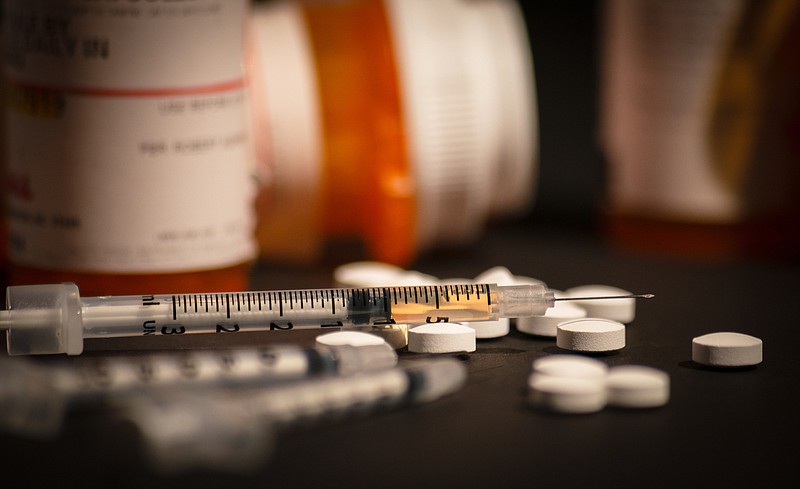Three out of four drug-related deaths in Hamilton County last year involved methamphetamine or fentanyl - a powerful synthetic opioid that is 50 to 100 times more potent than morphine - according to provisional data from the county medical examiner.
The medical examiner's office identified 106 drug-related deaths among Hamilton County residents throughout 2019. Half of those deaths involved multiple substances, and some people had as many as five different substances in their system at the time of death, according to Ione Farrar, program manager in assessment and planning at the Chattanooga-Hamilton County Health Department.
Farrar presented the data Monday during a Chattanooga-Hamilton County Regional Health Council meeting at the health department. Those most affected by drug-related deaths were white males and people aged 30 to 39 years old.
"The emphasis statewide and nationwide is on opioids, but methamphetamine is coming back roaring," she said, adding most of the drug-related deaths were due to overdoses, but a couple were suicides.
Drugs killed 324 people in Hamilton County between 2013 and 2017, with a steady increase each year, according to the Tennessee Department of Health. In 2018, Hamilton County had 66 drug-related deaths.
The initial rise in drug overdoses and deaths was largely attributed to prescription opioid misuse, prompting new laws and policies targeting inappropriate prescribing and the practice often referred to as "doctor shopping," which is when someone seeking prescriptions for recreational use visits multiple physicians to obtain more prescriptions. Representatives from the Hamilton County Coalition have said in the past that while those policies help rein in prescription opioid misuse, they also can open the door for more illicit drug use as people seek alternatives.
"We've driven away from prescription overdoses, although they're still happening," Farrar said. In 2019, fentanyl accounted for the majority of deaths (44%), followed by meth (33%) and cocaine (13%).
Dr. Thomas Miller, chairman of the health council's addiction and recovery committee, said he was "struck" by the number of methamphetamine deaths when the group first reviewed the new data in late January. Law enforcement representatives who attended that meeting said that typically people aren't buying pseudoephedrine-based medicine from pharmacies and using it to make meth like in years past.
"They're not mixing it the way they used to in car trunks or other places," Miller said. "It is coming across the border."
Contact Elizabeth Fite at efite@timesfreepress.com or 423-757-6673.
